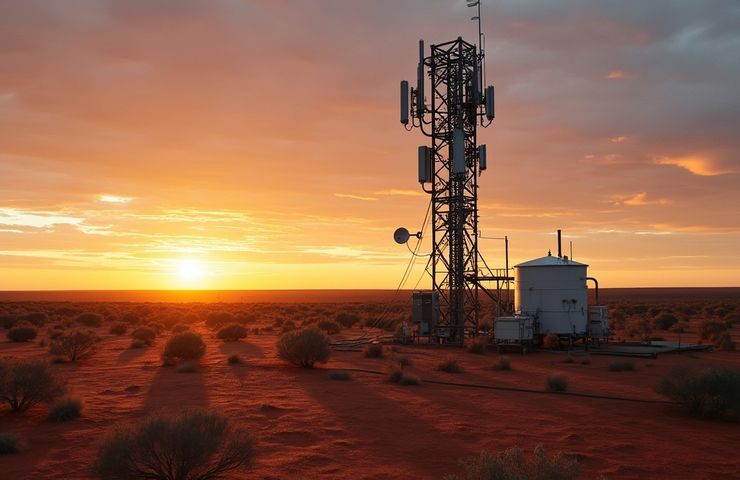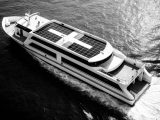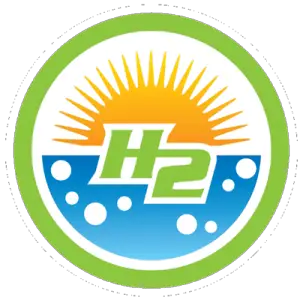
Hydrogen Production Powers Telecom Towers in Australian Outback
May 27, 2025If you thought diesel still had a long future powering remote infrastructure, think again. H2 Core AG just gave it another solid push toward retirement.
H2 Core Heads to Australia with Hydrogen Power in Tow
Big things are happening down under—H2 Core AG, a cleantech player out of Germany, is taking its PowerCore hydrogen system to the rugged Australian Outback. What’s the mission? Replace the diesel-guzzling generators that keep Telstra’s remote telecom towers running. And with each tower burning through close to 15,000 liters of diesel every year, there’s plenty of room for change. The project is set for deployment at Mac Donald Hill and scheduled to wrap by Q3 2025. It will swap those old setups with self-sufficient hydrogen-based systems built around solar electrolysis, hydrogen storage, fuel cells, and battery buffering.
Why This Move Is a Big Deal
This rollout hits all the right notes—cleaner energy, less carbon, smarter logistics, and better uptime. With around one in every four Aussie cell towers off-grid, keeping them fueled is expensive and flat-out inconvenient. But hydrogen changes the game. Thanks to its high energy density and flexible storage, trips to refuel equipment in the middle of nowhere will become a lot rarer. That’s a big win for companies like Telstra, which is aiming to cut its Scope 1 and 2 emissions in half (compared to 2020 levels) by 2025.
How the Tech Stacks Up: Inside the PowerCore
At the center of it all is the PowerCore, H2 Core’s flagship system. It’s no lightweight setup. We’re talking a solar-powered PEM electrolyzer that makes hydrogen onsite, which then gets stored at 350 bar in high-pressure tanks. That hydrogen feeds a 50kW PEM fuel cell, backed up by a 100 kWh lithium-ion battery buffer. The whole operation runs under the watchful eye of their AI-powered MX Controller, which dynamically balances the flow of energy—no small feat under the blistering 40°C-plus highs typical of the Outback.
One factor worth noting: Actual efficiency for electrolyzers can vary significantly in harsh environments, and performance data will become clearer once these systems are operational in real Outback conditions.
Scaling Up: This Could Be Just the Beginning
If this pilot project goes to plan, Telstra could eventually retrofit over 580 remote tower sites. And it’s not just the telecom industry watching closely—there’s potential crossover here for mining and agriculture, especially in Western Australia, where a 30% clean energy rebate for remote power solutions could move things along even faster.
Having formally partnered with Australian firm Green HY2 Ltd, H2 Core is clearly laying serious groundwork. It’s not just a test run—it’s a strategic entry into Australia’s vast off-grid energy market. And as the cost of green hydrogen production keeps dropping, hydrogen isn’t just looking clean—it’s starting to look cost-effective too.
What’s Driving the Shift? New Rules, New Priorities
This shift isn’t just about tech—it’s policy-driven, too. Australia’s regulators have increasingly focused on improving backup power reliability at critical telecom sites. Past disasters, like bushfires knocking out towers and leaving communities isolated, are a major reason behind increased urgency to modernize infrastructure. Changes like this are long overdue and are now lighting the fire under utilities to evolve.
Diesel’s Swan Song?
Let’s be honest—diesel generators are kind of like landline phones: solid in their day, but not built for the future. In places where dependability and lower emissions are non-negotiable, hydrogen fuel cells are stepping up. Still, it’s important not to gloss over the hurdles—hydrogen’s a tricky customer. Storage, transport, safety… and broader economic challenges like high production costs, infrastructure limitations, and regulatory complexity have so far held Australia’s hydrogen sectors back, as noted in recent Argus Media industry analyses.
Telstra’s investment shows the writing’s on the wall. Hydrogen production, energy storage, and smart-integrated systems aren’t fringe concepts anymore—they’re stepping into the mainstream, with high-stakes applications leading the way.
For now, this project might be the clearest real-world test we’ve seen for hydrogen’s role in remote infrastructure. If it lives up to expectations, it could become the go-to model for low-emission, off-grid energy. But in a place as unforgiving as the Outback, big promises meet even bigger realities.
Only time—and the sun-scorched Aussie outback—will tell if hydrogen’s ready to take the crown.



 With over 15 years of reporting hydrogen news, we are your premier source for the latest updates and insights in hydrogen and renewable energy.
With over 15 years of reporting hydrogen news, we are your premier source for the latest updates and insights in hydrogen and renewable energy.